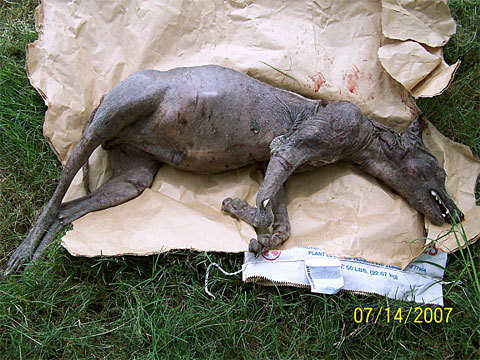Coleman and Clark suggested that a DNA test should be done on the mount to determine what it is. Kirby, however, was not so certain he was ready to end a mystery that had been passed down by his family for four generations.Such test certainly lain to rest last year's Texas Chupacabras imbroglio.
Oh, and by the way, you're spelling it wrongly. Singular or plural chupacabras is spelled c-h-u-p-a-c-a-b-r-a-s, "chupacabra"
People who refer to this wonderful beasie as “chupacabra” really get my goat. When one says "chupacabra", they're refering to that entity that is “the sucker of a goat”. Chupacabras is that entitity that is “the sucker of goats”. Perhaps English speakers feel that a false plural is being formed and they resort to “s” removal. Fortunately the singular/plural issue is resolved–in Spanish–by a “definite article” placed in front of the noun (el, la, los, las, lo): One single chupacabras: “El Chupacabras” A troupe of the things: “Los Chupacabras” If female: “La Chupacabras” A cluster of females: “Las Chupacabras” So the word “Chupacabras” remains intact — no need to amputate the final “s”.
Think of it this way: sort of a Jennifer Lopez thing (good lookin' and cross cultural).


The thing is that “chupacabras” was first used on television in 1960, in an episode of the TV western, Bonanza by a Mexican character who was talking with one of the Cartwright family characters, about a creature that sucked the milk from goats, hence it being one of the “goatsuckers,” and was related to the birds, whippoorwills.
Zoologically, night jars and whippoorwills are members of the Caprimulgiformes (goatsuckers) and thus are called “Chupacabras” in Spanish. It seems a natural extension on the basis of this usage that a cryptozoological creature, a new cryptid sucking the blood from goats, would also be called a Chupacabras.